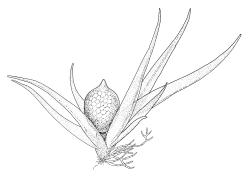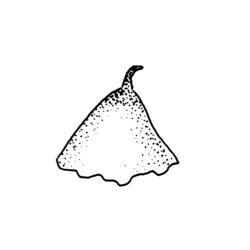- ≡ Phascum sessile Bruch, Jahresber. Pollichia 2: 49 (1844)
- ≡ Ephemerum crassinervium subsp. sessile (Bruch) Holyoak, J. Bryol. 32: 130 (2010)
Protonema lustrous. Leaves erect-spreading, linear-ovate, the largest c. 1.5–2.0 × 0.2 mm, entire or nearly so; upper laminal cells elongate-rhomboidal, smooth, moderately differentiated from the elongate-oblong cells at leaf base. Costa filling the subula, usually weak in lower leaf, smooth.
Autoicous. Perigonial buds present at base of fruiting plants, c. 0.3 mm, upper portion of bracts widely spreading. Capsules spherical, yellow-brown, 0.4–0.6 mm diam., with a stout apiculus; stomata few, scattered throughout exothecium. Spores yellow-brown, broadly elliptic or weakly reniform, 69–81 × 54–60 µm, coarsely bullate-papillose.
Smith 2004, fig. 123, 7–9.
NI: S Auckland (near Meremere).
Adventive. Europe* including Britain. Also recorded from Israel, Turkey, and Morocco by Smith (2004).
Known in N.Z. from only two collections from damp soil in paddocks at low elevation; they were collected in April and July 1980 by J.K. Bartlett.
The two known collections are from Island Block and Amokura, both near Meremere. The material from Amokura was cited by Bartlett (1984, p. 185) as E. crassinervium, and this report (based on an incorrect determination by Fife) is reflected in the record of this species in Fife (1995). However, re-examination of the material shows the laminal cells in the Meremere material are smooth rather than prorate, and the leaf margins entire. In both collections, perigonial buds can be demonstrated at the base of fertile shoots. The plants are thus interpreted here as autoicous; the sexuality of this species was interpreted by Smith (2004) as pseudodioicous in Britain. The stomata here are few, and scattered in the upper portion of the exothecium. The N.Z. material compares well to material from France in herb. Beckett. This species was treated as a subspecies of E. crassinervium (Schwägr.) Hampe by Holyoak (2010) but this view is not adopted here.








